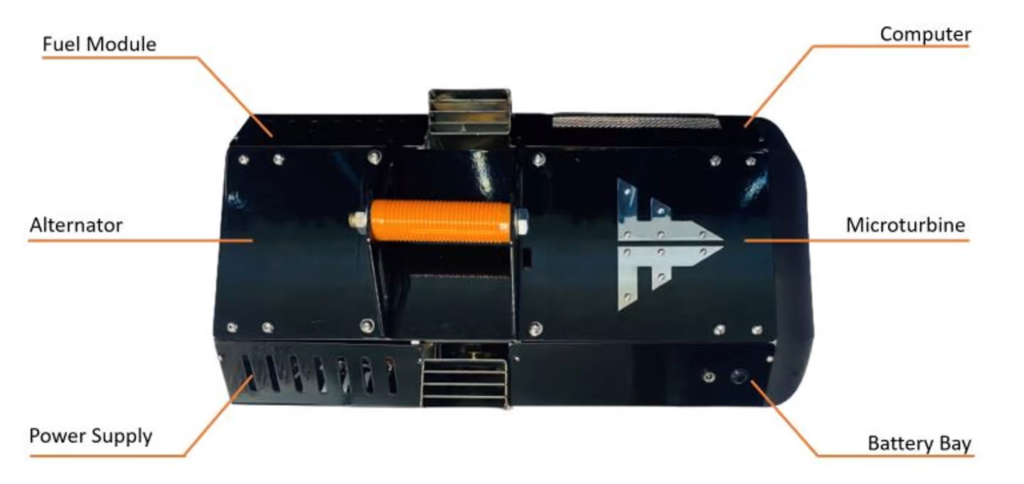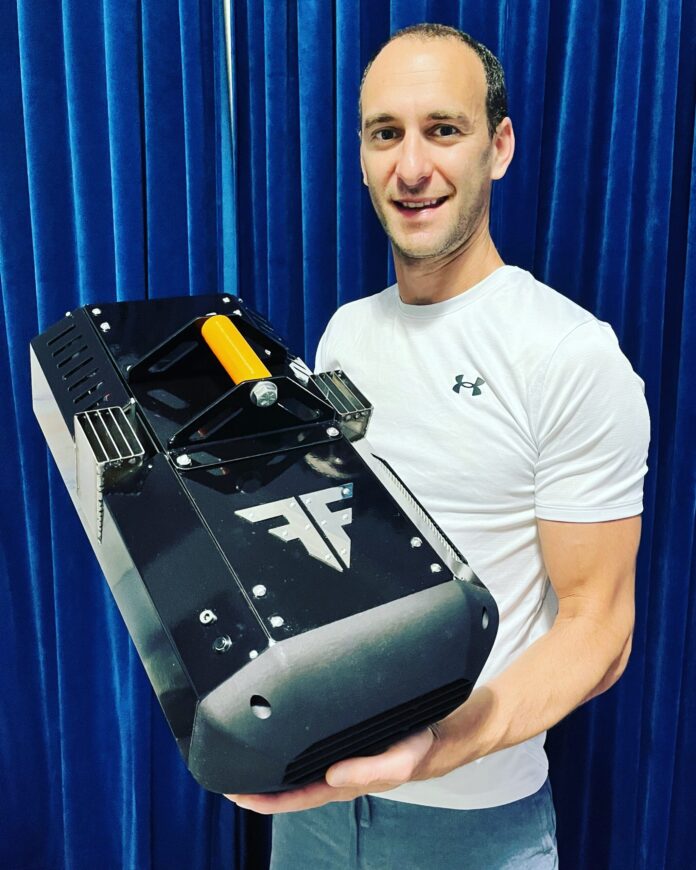Drone-maker Fusionflight has announced an 8-kW microturbine generator that weighs less than one-tenth of what an equivalent petrol generator would, and it’s the size of a toolbox instead of needing its own wheels – if you can handle the epic noise levels.
This company is best known for its JetQuad UAVs – ultra-fast VTOL drones using thrust-vectored jet turbine propulsion to act like quadcopters on steroids. Their performance levels are absolutely epic compared against electric quadcopters, with theoretical top speeds over 400 mph (644 km/h), much like Mayman Aerospace’s turbine-powered Speeder flying motorcycle design.
They’re amazing little power units, running on diesel, kerosene or jet fuel, with 5 percent turbo oil mixed in. And Fusionflight has taken advantage of their extreme power density to create an ultra-portable generator that packs an 8-kW punch. The ARC microturbine generator measures about 17 x 27 x 52 cm (6.7 x 10.6 x 20.5 inches) and weighs just under 9 kg (19.8 lb). For reference, a petrol-powered machine like the Gensafe GF8000 weighs 107 kg (236 lb) and uses a 459 cc engine, although to be fair it’s got an inverter built in as well, where the ARC microturbine requires you to buy one separately.

Fusionflight says it’s powerful enough to run an off-grid home with, light enough to mount as a range extender to small electric aircraft and drones, and it offers a way to charge up an electric car where no plug-in options are available. Mind you, it won’t charge the battery back up as fast as your EV drains it on the highway – by our math, the Tesla Model 3 uses around about a constant 15.6 kW at 90 km/h (56 mph), rising to around 21.6 kW at 120 km/h (75 mph).
Still, the ARC turbine generator is easily stackable, so you can run them in parallel if more power is needed. That’s if you can deal with the noise.
Fusionflight doesn’t give any figures for noise, nor indeed does JetCat, a leading supplier of these kinds of microturbines. But I’ve stood behind David Mayman as he lifted off wearing a jetpack powered by similar turbines, and the noise split the sky right across Sydney Harbour. One noise evaluation study on an older JetCat P80 turbine measured 116.5 decibels – louder than a chainsaw, a jackhammer, or a typical rock concert.
To be fair, turbine noise is typically high-pitched, it can be quite directional, and it can drop off quicker with distance than lower-frequency vibrations like your typical thrumming petrol generator. And Fusionfight has surely put some thought into noise reduction on this thing, so we wouldn’t imagine it’d be as loud as the P80 in that study.
But it’s still a 130,000 rpm turbine, and if the video below is a good indication, this is not a machine to switch on when the baby’s sleeping – even if the noise is kinda awesome. Skip to 3:30 to hear it being switched on and throttled up to 50 percent. No pricing is available as yet, but these turbines are not cheap, so you can probably expect to pay a fair old premium for the extreme reduction in size and weight that the ARC delivers.






















